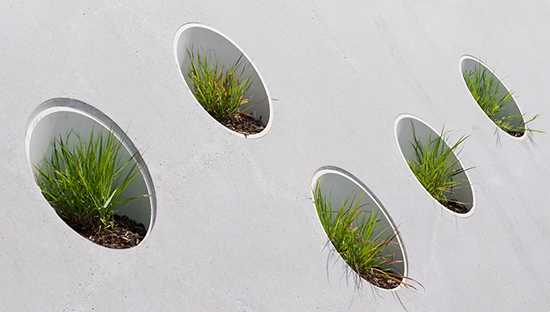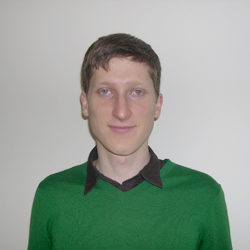
Several members of our staff attended a BSA Sustainability Education Committee presentation from Tim McGee of IDEO. McGee shared his perspective on biomimcry and a couple of PAYETTE staff shared their responses.
From Alison Duncan:
Biomimicry – the immediate image that comes to my mind is one of my first-semester design students telling me his project looks like a tree because he wants it to be “natural.” Digging a little deeper, I think about research projects being developed at places like the Center for Architecture Science and Ecology at RPI, or the MIT Media Lab, or the Wyss Institute at Harvard Medical School, among many others. Projects that result in technologies that track the sun to pull more energy from it, or create drones that fly like bees. All fascinating areas of research, but all pretty removed from my day to day practice of architecture.
Tim McGee, a biologist and designer at IDEO, expanded my view of what biomimicry can encompass. For him, biomimicry is two-fold: combining biology and design in the making of things, and combining biology and design in systems thinking. The first form of biomimicry relates to the types of projects that I mentioned earlier – where we are designers engaging with nature in the making of technologies, or objects, or buildings. This kind of engaging in biomimicry can occur either through partnerships with nature, the synthesizing of natural processes or the creation of technologies inspired by nature. I found myself more inspired in Tim’s understanding of the incorporation of biology and design through creative thought processes, or what he calls mental models of biomimicry.
In his three month’s a IDEO’s Cambridge office, Tim has been brought onto projects at the early brainstorming phase to expand a client’s, and design team’s, way of thinking about a design problem. Design and architecture are both endeavors that require systemic thinking. Designers need to look at the big picture and understand its relationship to each of the details, mentally shifting scales all the time to make sure that all the parts support the whole. While designers are trained and practiced at making these mental leaps, clients are not trained in the same way and can find it difficult to follow design ideas that capture abstract concepts and systems. Everyone, however, has some experience with nature. Tim uses his knowledge of systems present in nature to spur deeper thinking about how other complex systems work, like those of a manufacturing line, or mobile communications in a business with far flung employees. With a biologist’s knowledge of natural ecosystems, his design team discovers new types of systems that have relationships to how people work and live. Nature is an easy example that most clients can immediately relate to, and even the most superficial understanding of an element in nature can be used as a gateway to understanding how complex natural systems actually work and analogs that can be made to the design problem at hand.
The analogy with natural systems is not always a direct translation, which for me made his argument all the more convincing. One of the anecdotes Tim shared demonstrated how he used leaf cutter ants to get a manufacturing client to think about efficiency, flexibility, adaptability and resiliency in their production line. The client came to IDEO with the preconception that they wanted a more efficient manufacturing line so they could adapt to fast, abrupt changing in their product line. Unlike this client, which manufactured a variety of products all in the same facility, leaf cutter ants only harvest one thing to eat – leaves. While their monoculture of growing fungus on leaves left the ants vulnerable to diseases attacking their only food supply, the leaf cutter ants also produce a bacterium which protects the leaves that grow their food. The ants evolved a special pouch that carries this bacterium, spreads it over their bodies, and cover the plants and leaves that they pick. This resilient bacterium protects their highly efficient system of monoculture to ensure their food supply. Using this kind of example from nature, Tim was able to get his client to think more deeply about the complex nature of the manufacturing system and whether they really wanted an efficient system, or one that resilient enough to adapt to sudden changes.
Flexibility, adaptability, resiliency and efficiency are just some of the complex ideas that we encourage our clients to think about with each design problem. There are challenges that designers face in creating architecture that is more sustainable and better serves our client’s needs. If nature can spur conversations about abstract systems, or provide inspiration for a different way of looking at a complex design problem, then maybe all architecture firms should consider hiring a biologist.
From Timothy Cooke:
I found Tim McGee’s presentation thought provoking and enjoyable. As Alison mentioned, much of his presentation was focused on ‘mental models’ drawn from the natural world that help to bring new insights to the problems faced by his clients. His discussion of ‘mental models’ immediately brought to mind the Constructivist theory of education and the pioneering educational reforms of John Dewey at the beginning of the last century. Constructivism asserts that learners internalize and absorb by doing, interacting with the world and engaging with the environment around them. Interestingly, architectural education in this country is highly Constructivist in many respects. Much of design education is based in an “active doing” training model. This is epitomized by the design studio – the backbone of architectural education – where students are pushed to experiment and create in a ceaseless cycle.
But to bring things back to the lessons we can glean from biology, Tim McGee reminded me that even though it may seem counterintuitive, we should push ourselves to get away from the built world and the architectural studio now and then so that we can directly engage the natural world. Maybe once in a while, if we disengage with the buildings we love to experience and create, we might find new insights and gain some perspective in our practice as architects and designers.
I am compelled to end with a particular ‘thought model’ from the natural world I’ve always loved: the hermit crab. The hermit crab is a parasite of sorts, stealing the discarded shells of marine gastropods to house their own relatively fragile bodies. As the crabs grow, they must search out new, roomier shells. Essentially, they are trading in their portable bungalows for ever bigger digs. The image of a house-hunting crab has always stuck with me and made me think differently about the life cycle of buildings and materials. The lesson from the hermit crab might be that we only really need a dwelling just big enough to suit our current needs because we can always trade up if necessary. It’s a lesson that if American home owners took to heart would have a greater positive impact on the planet than many of today’s in-vogue green building practices combined. (For some context, the average size of a new American home has more than doubled since 1950, growing from 983 sf in 1950 to 2,392 sf in 2010, while the American nuclear family has steadily shrunk during the same time period.)
Did you attend Tim McGee’s presentation? Have you heard him talk the role of a biologist in problem-solving situations? What were your impressions?



